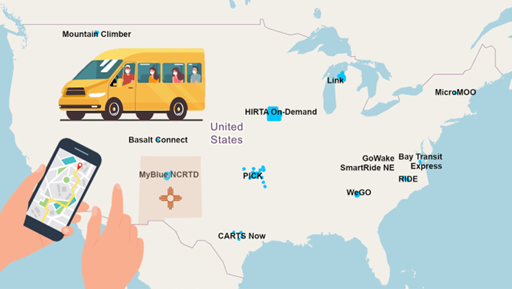Research
At RUTA-HC, we employ diverse quantitative and qualitative methodologies to examine transportation’s impact on public health, aiming to shape public policy and planning initiatives that pave the way for a healthier future. Recognizing transportation’s fundamental role in economic and social factors influencing community health, our mission is to drive positive change by engineering safer, more resilient, and equitable transportation systems that foster belonging and improve overall well-being.
Regarding research methods, we performed a plethora of statistical (non-spatial and spatial econometric modeling in STATA, R, GeoDa, and ArcGIS Pro), quantitative, and feasibility analyses, and have created decision-making tools to address diverse transportation-related challenges. We also have expertise in conducting qualitative analyses, surveys, mix-method analyses, and utilizing behavioral science methodologies to study complex transportation issues. The topics we have worked on are shown in the graph below:
Understanding External Factors and Workload’s Impact on Cyclist Safety

Microtransit: The What, How and Where.

Evaluating Inequality in EV Charging Stations in New Mexico
Electric vehicles (EVs) are gaining immense popularity, and their adoption is rising. This transition to EVs is crucial for various reasons, most notably from the environmental perspective, i.e., reducing greenhouse gas (GHG) emissions to prevent climate change. However, with this increasing adaptation, the fairness of EV infrastructure availability is not the same among different communities. The Justice 40 Initiative has differentiated communities into two groups, i.e., disadvantaged communities (DACs) and non-disadvantaged communities (non-DACs), based on five indicators: Transportation insecurity, Environmental Burden, Social Vulnerability, Health Vulnerability, and Climate and Disaster Risk Burden. Using this data, this research focuses on identifying disadvantaged communities (DACs) across different tracts in New Mexico and finding whether access to the Electric Vehicle Charging Station (EVCS) is equitable across the DACs and non-DACs. This is achieved by leveraging the power of spatial and network analysis and using data from the U.S. Department of Energy, USDOT(ETC)Explorer, Census Data, and Open Street Map. The outcome of this research can provide insight into whether the Justice 40 initiative is on the way to delivering its goals of providing equitable access to the transportation infrastructure to marginalized communities. This outcome can offer valuable guidelines for implementing the policies and projects to stay on track with the Justice 40 Initiative. Additionally, it would offer a methodological framework that could be used to develop similar analyses in other regions in the U.S.

